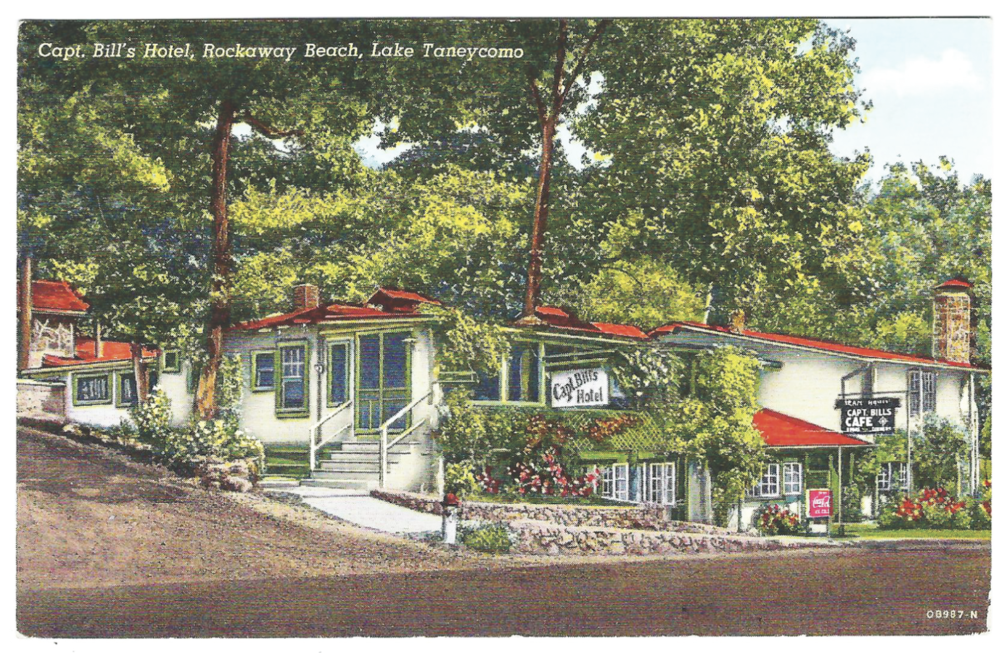
Michael Bushnell
Contributing Historian
Just after the turn of the 20th Century, Kansas City, Kan., businessman Willard Merriam got wind of plans for a new dam, which was to be built along the White River, just inside Taney County, Mo. Merriam was looking for a good location to establish a summer resort and this newly constructed lake fit the bill perfectly.
Merriam purchased 600 or so acres along the lake banks on the location of Rockaway Beach. These lots were subdivided and cottages and homes were built. Cabin sales were brisk as more and more people learned of this new resort community.
Six years after the dam’s 1913 completion, the town of Rockaway Beach was chartered. The railroad brought most of its tourists by way of Branson or Hollister, then down to Rockaway Beach by a ferry boat.
In 1925, electrical service was laid to its town and roads were carved from the rugged hills leading to the newly chartered city. This rapid growth spurred development of new entertainment venues — including a new dance pavilion and hotel. The pavilion featured live bands and dancing on the weekends, with food available next door at the Inn. William “Capt. Bill” Roberts was brought in to run its restaurant and newly constructed hotel. Roberts had a band that played at the pavilion, as well as an orchestra that played on the charter boat, which ran between Branson and Rockaway Beach.
Within the next few years, two new upscale motels were built in town (The Brown Hotel and the Hotel White), and the boom in Rockaway Beach was in full swing. During the 1950s, Rockaway Beach was known as the Fort Lauderdale of the Midwest. This town featured over 300 nightly room rentals, multiple restaurants and the downtown strip was brimming with retail shops, amusement arcades and bumper cars. Television game show host Bob Barker is said to have worked as a waiter at both Capt. Bills and the Brown Hotel. Its beaches were packed and the town was thriving and prosperous.
Prosperity, however, was short-lived. With the construction of a new dam in 1958 creating Table Rock Lake, water temperatures dropped to a cool 55 to 60 degrees — too low for many of the recreational water sports, such as skiing or swimming.
“Progress” claimed the sandy beaches and resort owners closed up shop for greener pastures up the road at Table Rock or Lake of the Ozarks.
Van Hanner, director of the Rockaway Beach Library and Museum, tells us that the Rockaway Beach Post Office now occupies the upper floors of the old Capt. Bill’s Hotel, and the museum and library occupy the lower level of its structure.
This linen postcard was published by the White River Art Station of Branson, Mo.



















